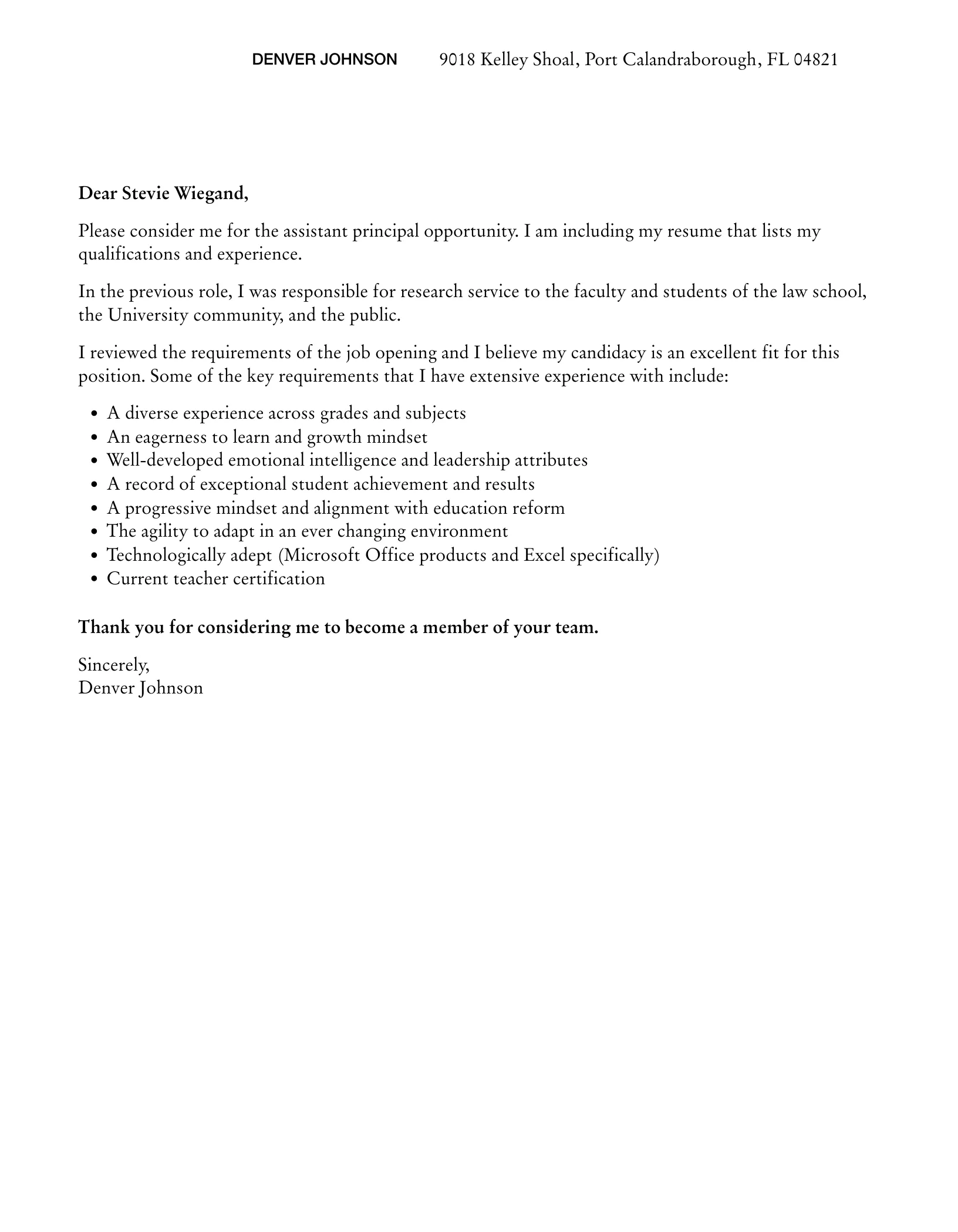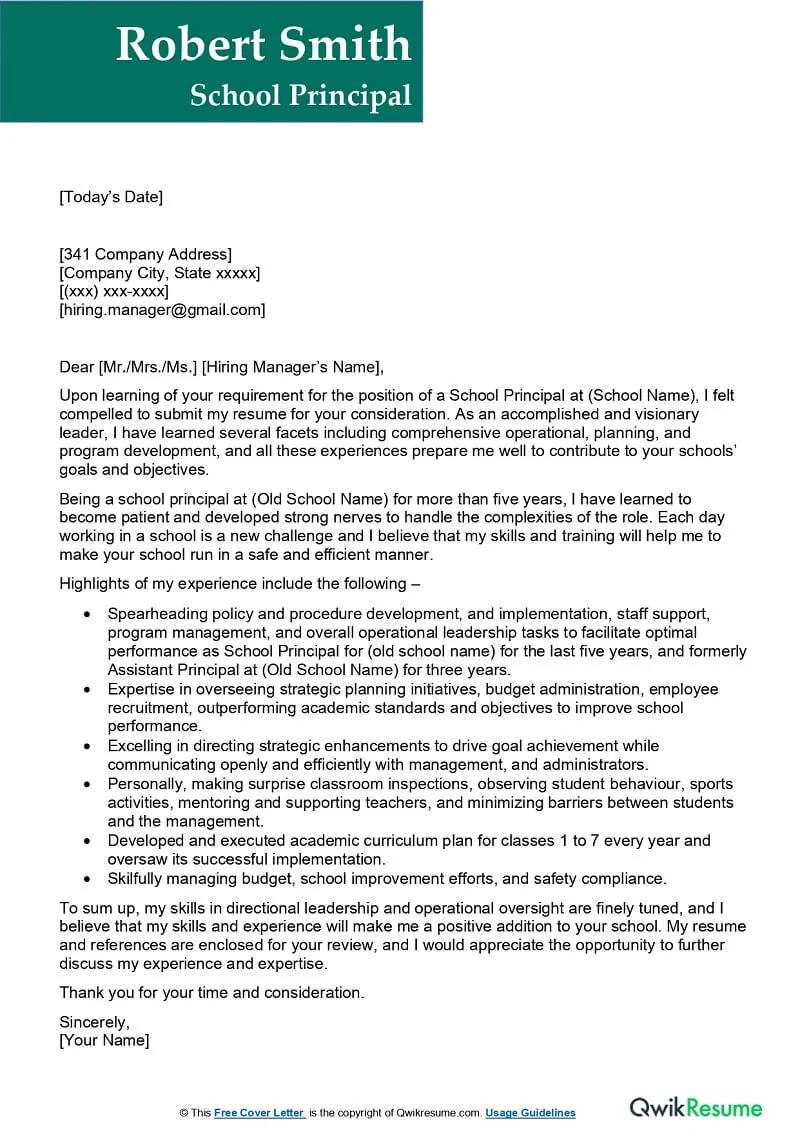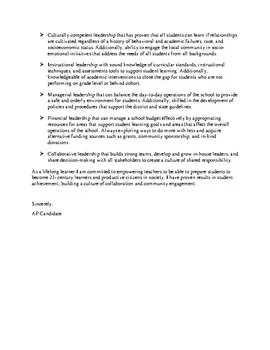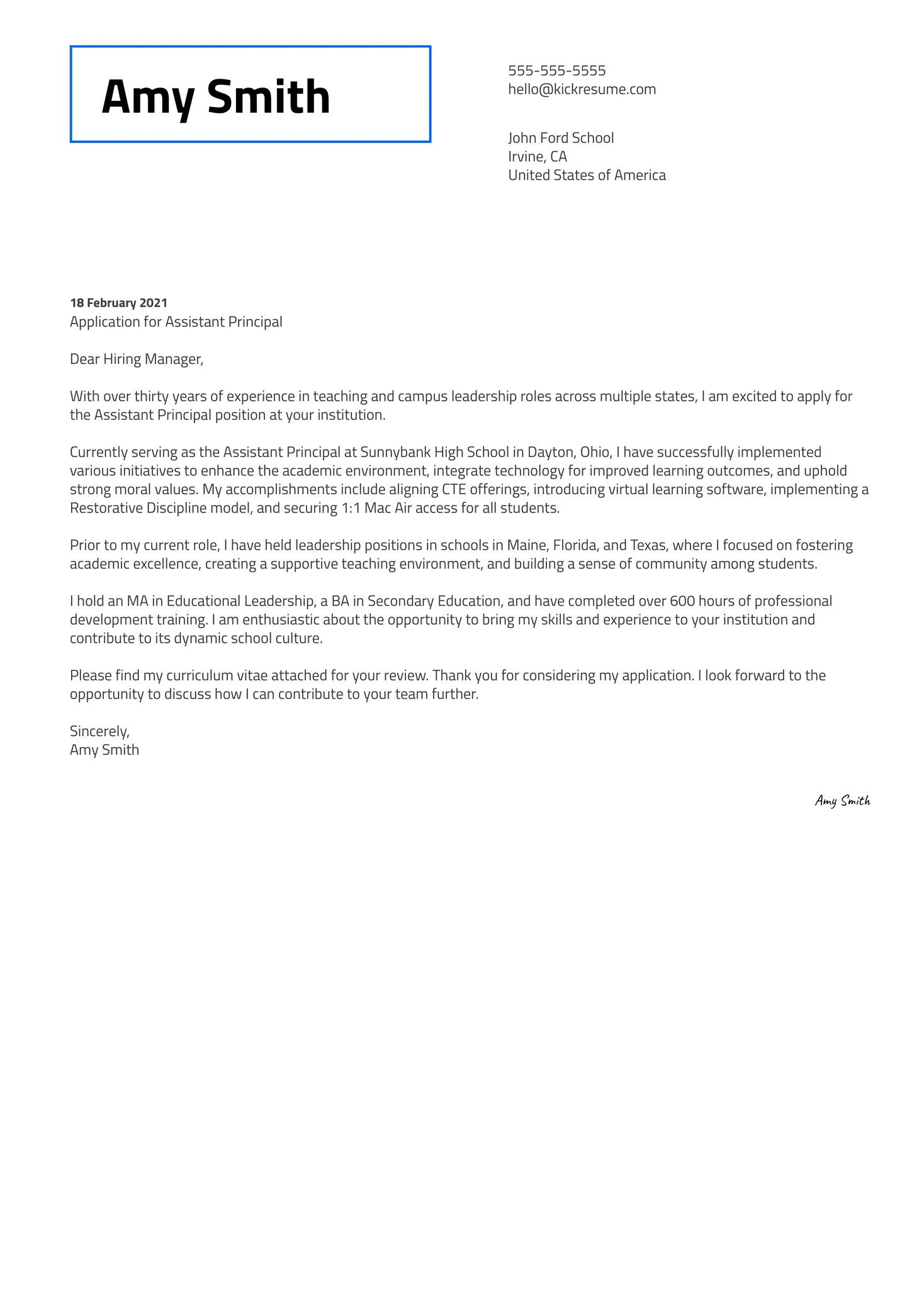Crafting a Winning Cover Letter for Assistant Principal Positions
A compelling cover letter is your first opportunity to make a strong impression on a hiring committee. For assistant principal positions, where leadership, administrative skills, and educational vision are paramount, the cover letter must be meticulously crafted. It’s more than just a formality; it’s a vital tool to showcase your qualifications, personality, and passion for education. This guide provides detailed insights into creating a cover letter that captures attention and secures an interview. Your cover letter must demonstrate you understand the role’s demands and can meet them effectively. Remember that the cover letter is your introduction, selling your skills and qualifications and setting the stage for your resume.
Understanding the Role of an Assistant Principal
Before composing your cover letter, a thorough understanding of the assistant principal role is essential. Assistant principals wear many hats, including student discipline, curriculum development, staff evaluation, and community relations. The role demands strong leadership, organizational skills, and the ability to work collaboratively with teachers, parents, and students. Understanding the nuances of the position, the demands of managing day-to-day operations, and the importance of fostering a positive school climate allows you to tailor your cover letter to highlight your most relevant strengths and experiences. It’s about showing you get it, you know the job, and can contribute immediately.
Key Responsibilities of an Assistant Principal

Assistant principals are responsible for a wide range of duties, each requiring specific skills and competencies. These often include overseeing student behavior and enforcing disciplinary policies; participating in curriculum development and assessment; providing support and evaluation for teachers; and communicating with parents and community members. Your cover letter should highlight your experience and expertise in these key areas. Demonstrating your ability to manage these responsibilities efficiently, while maintaining a positive and productive school environment, will set you apart. Furthermore, emphasize any specialized skills or experiences that align with the school’s needs, such as experience with specific educational programs or a proven track record in improving student outcomes.
Highlighting Your Skills and Experience
Your cover letter should directly address the skills and experiences most relevant to an assistant principal position. This is where you spotlight your leadership abilities, administrative experience, and any quantifiable achievements that demonstrate your positive impact on previous schools or organizations. Providing specific examples of your accomplishments and how they align with the school’s needs is more effective than simply listing responsibilities. Think about your proudest achievements and how you contributed to them. Use this section to demonstrate you understand the job requirements.
Showcasing Leadership Abilities
Leadership is at the heart of the assistant principal role. In your cover letter, provide examples of how you’ve led teams, mentored staff, and implemented successful initiatives. This might include leading professional development sessions, chairing committees, or developing and implementing new school policies. Quantify your achievements whenever possible, such as improved student test scores, reduced disciplinary incidents, or increased parent involvement. Use action verbs to describe your leadership actions. This section should make it very clear you are ready to lead.
Demonstrating Experience in School Administration

Administrative experience is crucial. Detail your experience with student discipline, staff evaluations, budget management, and scheduling. Highlight your proficiency with school management software, your ability to handle sensitive situations, and your familiarity with relevant educational policies. Be specific about your experience. For instance, rather than saying you managed student discipline, state how you improved disciplinary procedures or reduced suspension rates. Your goal is to showcase your experience to show the employer you are familiar with the job.
Quantifying Achievements and Impact
Numbers speak volumes. Whenever possible, quantify your achievements to demonstrate your impact. Did you increase student test scores by a certain percentage? Reduce disciplinary incidents? Improve staff retention? Provide specific data to support your claims. For example, “Implemented a new attendance policy that reduced chronic absenteeism by 15% within the first year.” These figures offer tangible proof of your effectiveness and help you stand out from other candidates. The data should provide context and relevance for the job requirements.
Structuring Your Cover Letter Effectively
The structure of your cover letter is just as important as its content. A well-organized letter that is easy to read and understand is more likely to capture the hiring committee’s attention. Use a professional format, clear and concise language, and compelling examples to showcase your qualifications. Follow standard business letter format, including a formal salutation and closing. Use headings and bullet points to break up large blocks of text and make it easier to scan. Proofread your letter carefully for any grammatical errors or typos.
Opening and Closing Statements

Your opening paragraph should immediately grab the reader’s attention and state why you are interested in the position. Clearly state the position you’re applying for and how you learned about the opportunity. In the closing paragraph, reiterate your interest, express your enthusiasm, and include a call to action, such as offering to provide references or attend an interview. Make it very clear that you are eager to discuss your qualifications further and look forward to the opportunity.
Formatting and Tone
Maintain a professional and enthusiastic tone throughout your cover letter. Use clear, concise language and avoid jargon or overly complex sentences. Tailor your letter to the specific school or district and highlight how your skills and experience align with their needs. Pay close attention to the formatting; use a standard font like Times New Roman or Arial, and ensure your letter is easy to read. Proofread carefully for any errors in grammar or spelling, as this will demonstrate your attention to detail. The tone and format should scream professionalism and confidence.
Tailoring Your Cover Letter
A generic cover letter is unlikely to make a significant impression. Tailor your letter to each specific position you apply for. Research the school and district, and identify their values, goals, and any specific challenges they may be facing. By demonstrating that you understand their needs, you can show how your skills and experience can contribute to their success. This is key. Show them you are not just applying for a job; you want to contribute to their success. This approach demonstrates genuine interest and increases the chances of getting an interview.
Researching the School and District

Before writing your cover letter, take the time to research the school and district. Visit their website, read their mission statement, and review any recent news or initiatives. Identify the school’s values, goals, and any challenges they might be facing. This research will provide valuable insights to tailor your letter and show you understand their needs. This step is crucial. The more information you gather, the more effectively you can position yourself as a strong candidate.
Addressing the Specific Needs of the School
In your cover letter, address the specific needs of the school or district. Highlight how your skills and experiences align with their goals. For example, if the school is focused on improving student test scores, you can share your experience in developing and implementing successful academic programs. If they are trying to improve school culture, share examples of how you fostered a positive and inclusive environment in previous roles. The more closely your skills align with the school’s needs, the more likely you are to make a strong impression.
Proofreading and Editing
Proofreading is a critical step. Errors in grammar, spelling, or formatting can undermine your credibility and make a negative impression. Before submitting your cover letter, carefully proofread it for any mistakes. Ask a colleague or friend to review your letter and provide feedback. Ensure your letter is free of any errors. A polished, error-free cover letter shows you’re detail-oriented and committed to excellence. It also shows that you care. Take the time to review your letter and make it perfect.
